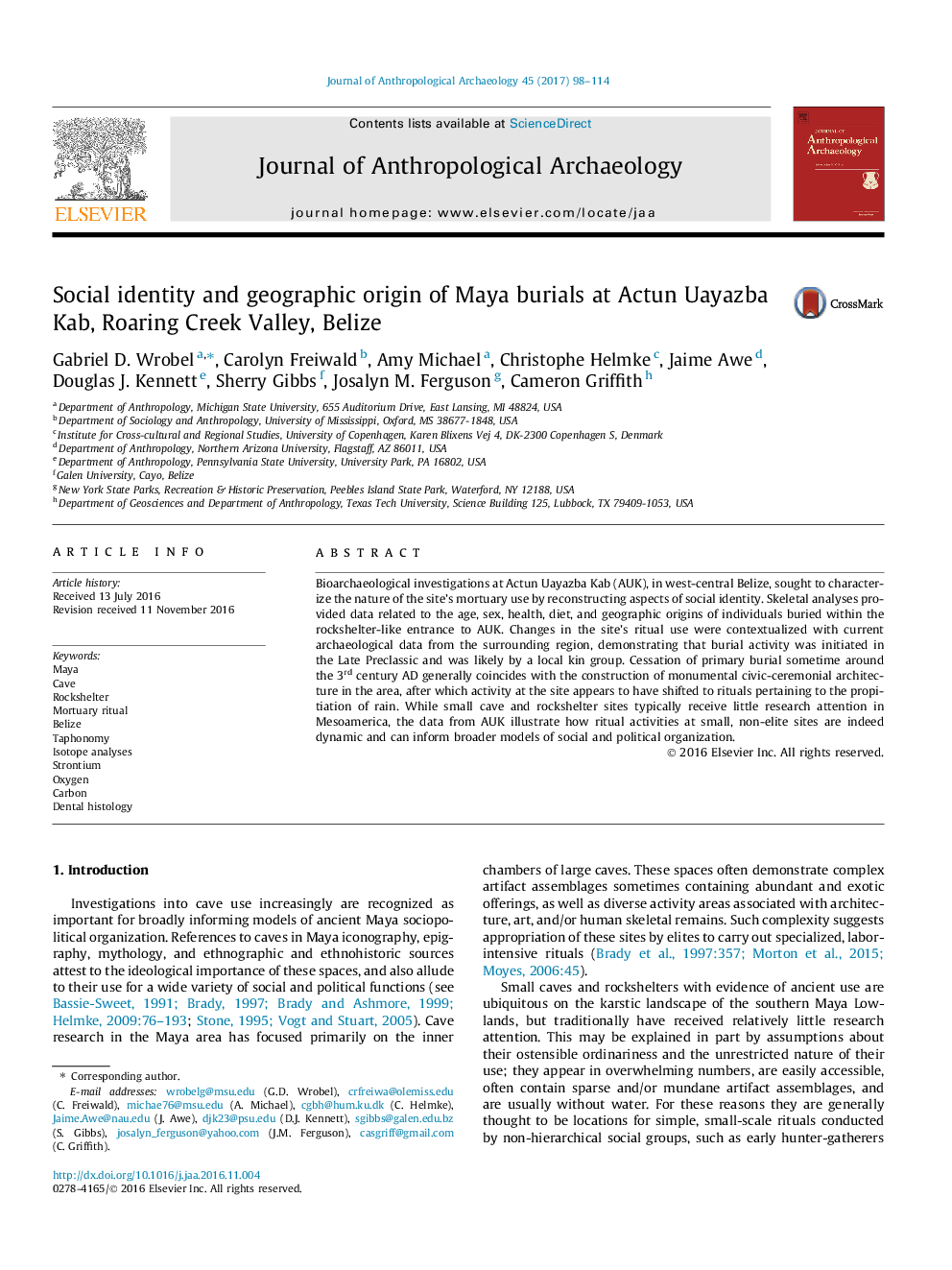| Article ID | Journal | Published Year | Pages | File Type |
|---|---|---|---|---|
| 5111924 | Journal of Anthropological Archaeology | 2017 | 17 Pages |
Abstract
Bioarchaeological investigations at Actun Uayazba Kab (AUK), in west-central Belize, sought to characterize the nature of the site's mortuary use by reconstructing aspects of social identity. Skeletal analyses provided data related to the age, sex, health, diet, and geographic origins of individuals buried within the rockshelter-like entrance to AUK. Changes in the site's ritual use were contextualized with current archaeological data from the surrounding region, demonstrating that burial activity was initiated in the Late Preclassic and was likely by a local kin group. Cessation of primary burial sometime around the 3rd century AD generally coincides with the construction of monumental civic-ceremonial architecture in the area, after which activity at the site appears to have shifted to rituals pertaining to the propitiation of rain. While small cave and rockshelter sites typically receive little research attention in Mesoamerica, the data from AUK illustrate how ritual activities at small, non-elite sites are indeed dynamic and can inform broader models of social and political organization.
Keywords
Related Topics
Social Sciences and Humanities
Arts and Humanities
History
Authors
Gabriel D. Wrobel, Carolyn Freiwald, Amy Michael, Christophe Helmke, Jaime Awe, Douglas J. Kennett, Sherry Gibbs, Josalyn M. Ferguson, Cameron Griffith,
